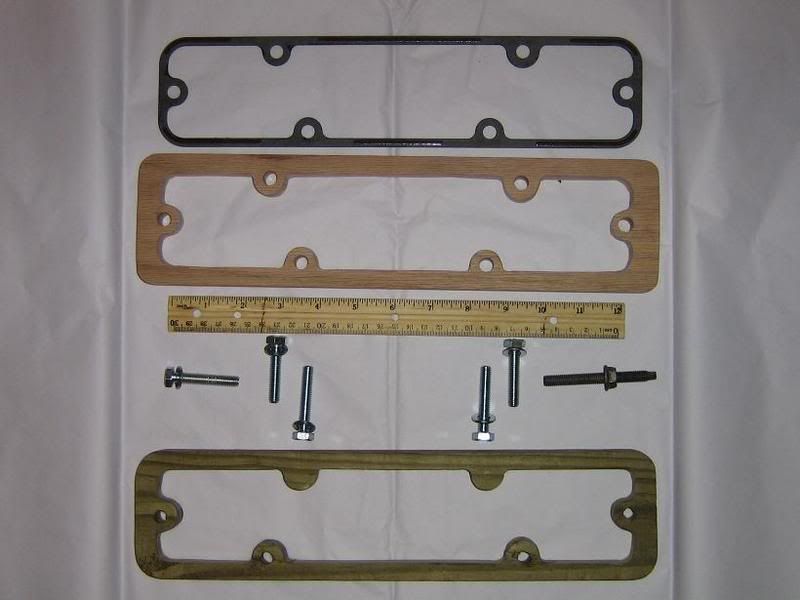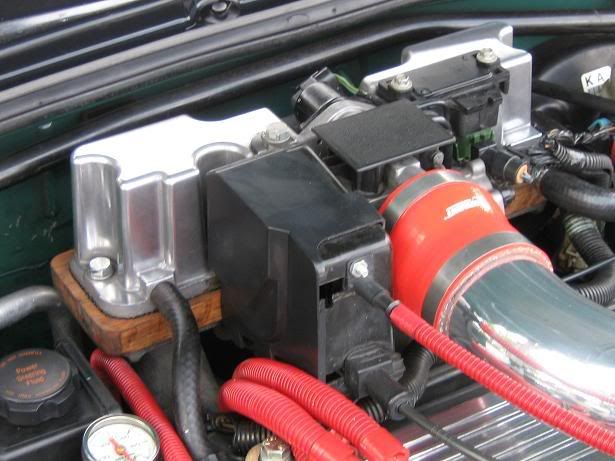If I was going to build a manifold how would I determine a good sized pelnum? I know its supposed to be big enough to fill atleast one cylinder but im not sure about the math on that. Any help would be appereciated.

Ok thanks! that helped my understanding a lot more. It will def be usefull.

Can't wait to see the results on transient performance (engine acceleration), not to mention what the rules are for forced-induction.
Go beyond the "bolt-on".
I know my motor actually cruises better with the addition of a wooden plenum spacer, that I made, which was used to increase plenum volume.
So wouldnt a throttle body spacer do the same thing?
thats quite an improvment, I know nothing about that engine but thats very interesting.
Quote:
If I was going to build a manifold how would I determine a good sized pelnum?
The same way as was done in the article Madjack posted. Trial and error combined with good documentation.
I always recommend 1.5X engine displacement as a good start. Seems to work well for transient and steady state applications. The FSAE cars are running against a huge restriction which may be part of the reason they saw such a gain with large displacement plenums. On the street or on a track with a light car and strong engine, you generally lose some response with a large plenum.
-->Slow
Yes, I noticed the same as that article describes when I built the manifold for CSU Fresno's FSAE car. I agree with slowolej with the restriction being the primary factor tho since we dynoed with and without the restriction and the #'s on the unrestricted TB inlet shows no real gains when you increased the plenum volumes beyond a much lower threshold. I ended up running 2.5x engine displacement and ran dynamic runners which lengthened and shortened as the engine revs raised and lowered...just following Helmholtz resonance pulses. Following the secondary pulse showed much better benefits then the plenum volume ever did. So, this basically means runner length makes the most difference, then followed by plenum volume behind a restricted TB...but with diminishing results as the TB becomes more capably of the flow rate needed.
Under boost, I cant say. I only ran boost on the restricted intake on the dyno and since the engine pulls thru the restriction at terminal velocity anyway under NA conditions all it did was level out the torque curve..nothing more. Couldn't aid with more lb/min of flow with the restriction in the way. Still saw vacuum on the plenum while pre-TB was showing boost. I would be willing to say the plenum volume would more lead to drive-ability issues in boosted apps as the plenum volumes got larger. Again this assumes your TB can flow the lb/min your looking for. I do know that while there is resonance in the intake in boosted conditions the pulse front is being bombarded with turbulent airflow in many directions while in the power band. This will basically negate all effects of any wave pulse advantages to speak of since the timing and directions of the waves will now mostly be a function of plenum geometry and not so much straight timing nor be in any reasonably predictable direction . I'd be willing to bet there is no honest answer to this question and couldn't even imagine the amount of processing power it would require to even begin to simulate these conditions....there is no good answer. For boosted apps, build it, cross fingers and dyno it. I'd stick to a reasonable sized N/A plenum of 1.5-2x displacement and get a nice long straight runner to aid the reduction of random directional pulses coming back towards the plenum...help keep them straight into and out of the runners. Make the backside of the plenum rounded to help distribute the pulses back into the plenum the best way possible with least resistance(instead of hitting a wall straight on they hit an angle and slide off instead of hit straight on). Also a nice full rounded runner initiation from the plenum will aid in reducing the possibility of creating turbulence at the entrance of the runners...especially if your going to run some hot cams that pull the air in very quickly.
Hope that helps....my head hurts now.
Edited 1 time(s). Last edited Sunday, July 12, 2009 10:32 PM
"Never argue with an idiot. They'll drag you down to their level, then beat you with experience!" -Anonymous
That was beautiful, Josh... Wish we got more feedback like that over the "simple" topics on here, like exhaust design.
Go beyond the "bolt-on".






